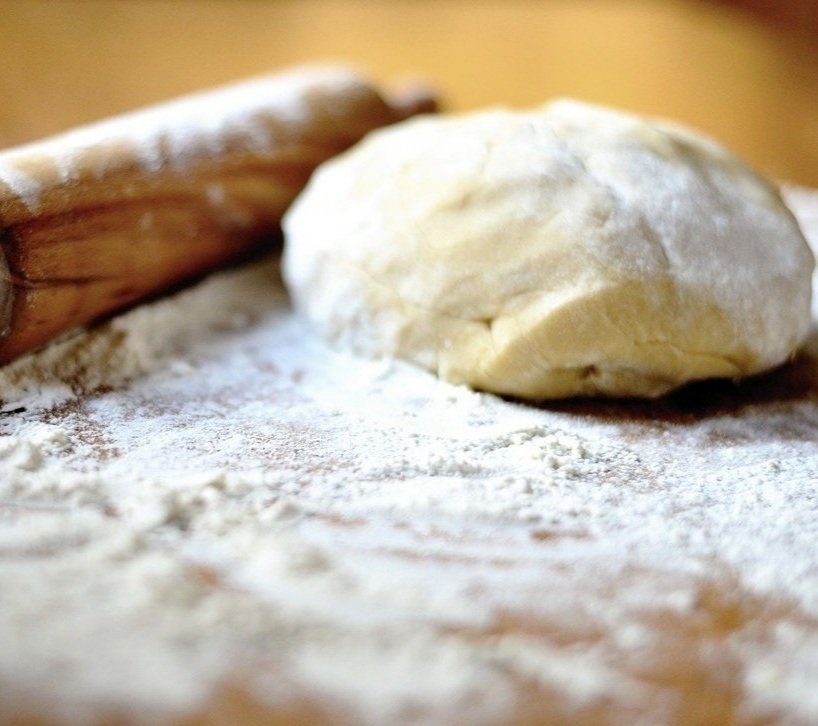Bignolati Recipe
From Naro to New Jersey
In their teenage years, my great grandparents immigrated to the United States. Papi and nonna came here from a little village called Naro, located in the Agrigento region of Sicily. New Jersey was not all that different from Naro. Fresh ocean air and sandy soil created the ideal climate for growing tomatoes & basil and making dough to die for. Many of their Sicilian cooking and baking traditions translated nicely. The bignolati (bean-yah-lah-tee) has been in my family for generations.
Making Dough
2 cups of flour
1 active dry yeast packet
1 cup of warm water
1 tablespoon of sugar
1 teaspoon of salt
olive oil (as much as you need)
At the heart of a perfect bignolati is fresh, homemade dough. The humidity and saltiness in the air, both in Naro and New Jersey, make the perfect environment for getting a rich, flavorful end result.
Add 1 cup of warm water to your stand mixer or bowl. It should be warm, not hot. If you’re using a stand mixer, you want to set up the dough hook attachment.
Pour the contents of 1 packet of active dry yeast in the water. Swirl it around with your finger and scrape any yeast off the sides of the bowls so as much of it as possible is in the water.
Sprinkle 1 tablespoon of sugar on top of the yeasty water. This is the food for your yeast. Let this mixture sit until the yeast activates and you see a foamy coating form on the surface.
Start the mixer on low, and slowly add 2 cups of flour, no more than a 1/2 cup at a time. About half way through the flour, add 1 teaspoon of salt and 1 teaspoon of olive oil. Then add the remaining flour.
Once all your dough ingredients are added, check the consistency of the dough. It should be sticky, but cohesive. Add another teaspoon of olive oil and let the dough knead for 2-4 minutes.
Take the bowl off the stand mixer and peel the dough away from the sides of the bowl. Pour a little olive oil around the edges of the dough. The goal is to get olive oil underneath. Then smooth out the top of the dough and rub it with more olive oil. (Olive oil is our life blood!)
Cover the bowl with a wet hand towel and set the dough in a warm, moist area to prove for at least 30 minutes. I like to put mine in the oven. In the colder months, turn on your oven to 165 degrees for 5 minutes, then turn it off before using it as your proving drawer.
The Filling
1 pound of ground beef
2-3 onions
3 cups of spinach
salt to taste
olive oil (again, as much as you need!)
Our family tradition has always been to fill our bignolatis with ground beef, onions, and spinach. But just a quick internet search shows that Sicilian families have wide-ranging ideas on what makes them taste best. Some use lamb or sausage. Others include cheese. You can experiment with fillings as long as you follow one rule - the less liquid that makes it into your bignolati, the better!
Pour a generous amount of olive oil into a pan and set the heat to medium-low.
Slice 2 large or 3 small onions thinly and add them to the pan. You want to let them cook slowly and reduce to be completely translucent.
Once the onions are cooked, add 1 pound of ground beef to the pan with the onions. Brown the beef, adding salt to taste.
Empty the beef and onion mixture into a fine strainer or cheese cloth to drain any liquid, fat and oil.
If you’re using fresh spinach, you can use the same pan to cook it down. If you’re using frozen spinach, defrost it in the microwave. Either way, once limp, the spinach needs to be drained of moisture with a strainer or cheese cloth as well.
Putting It All Together
The last step is to put your fillings in the dough, roll it up and bake it. This step is the part of the process I was allowed to help with as a young child. It’s a great way to get small children involved in your family cooking tradition!
Preheat the oven to 350 degrees
Pour some olive oil on a paper towel and rub it over a baking sheet. Then sprinkle farina, cornmeal, or even Cream of Wheat on the pan. This will prevent the bignolati from sticking to the tray.
Set up a large wooden cutting board or countertop area and get a rolling pin. Spread a generous amount of flour on the surface and rolling pin.
Take your dough out of its proving spot and peal it off the sides of the bowl. If you’re finding it too sticky, add some oil to your hands.
Knead the dough a few times on the floured surface to knock out some air. Cut the dough in half and set one half aside, then roll it into a long, narrow sheet. Roll until your dough is about 18 inches long, 12 inches wide and about 1/4 to 1/2 an inch thin.
Sprinkle half of your prepared fillings inside the middle of the dough. The preference on volume of fillings and thickness of the dough differs from family to family. My family likes a thin dough with lots of fillings.
Grab a long side of the dough and fold it over the top of the fillings. Take the other side and fold that on top of the first fold. Make sure to pinch the dough together on the top and at the ends to form a good seal.
Transfer the bignolati to the baking sheet and put in the oven for 30-45 minutes. You’ll know it’s done when the top is golden brown.

